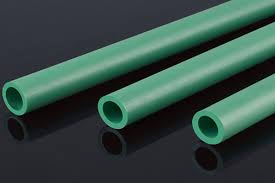Dec . 03, 2024 14:50 Back to list
ppr composite pipe product
Understanding PPR Composite Pipe Products A Comprehensive Overview
In the realm of plumbing and construction, the choice of materials plays a fundamental role in ensuring efficiency, durability, and sustainability. One such innovation that has gained significant traction is the PPR composite pipe. With advancements in technology and materials science, these pipes have emerged as a preferred solution in various applications, including residential, commercial, and industrial sectors.
What is PPR Composite Pipe?
PPR, which stands for Polypropylene Random Copolymer, is a type of thermoplastic polymer used primarily for piping systems. The composite aspect typically refers to the inclusion of additional materials, such as fiberglass or aluminum, which enhance the physical properties of the pipe. This innovative design combines the advantages of different materials, creating a pipe that is lightweight, flexible, and resistant to corrosion.
The basic structure of PPR composite pipes often consists of three layers an inner layer made of PPR, a middle layer that can be aluminum or fiberglass, and an outer layer of PPR. This multi-layer configuration provides increased strength and stability, making these pipes suitable for a wide range of applications, from hot and cold water supply systems to heating systems and industrial fluid transport.
Key Advantages of PPR Composite Pipes
1. Corrosion Resistance One of the standout features of PPR composite pipes is their resistance to corrosion. Unlike metal pipes, PPR pipes do not rust or corrode over time, which significantly extends their lifespan and reduces maintenance costs.
2. Thermal Insulation The composite layer helps in reducing heat loss, making them suitable for hot water applications. This thermal insulation capability enhances energy efficiency, leading to lower energy bills.
3. Lightweight and Easy to Handle PPR composite pipes are significantly lighter than traditional metal pipes, making them easier to transport and install. This characteristic also minimizes labor costs and simplifies handling during construction.
ppr composite pipe product

4. Flexible Design Options The adaptability of PPR composite pipes allows for various installation configurations, including tight bends and turns. This flexibility is particularly beneficial in complex plumbing systems where space may be limited.
5. Environmental Benefits PPR is a recyclable material, contributing to sustainability efforts in construction and plumbing. The production of PPR composite pipes also tends to have a lower environmental impact compared to metal pipes, making them a more eco-friendly option.
Applications of PPR Composite Pipes
PPR composite pipes are used widely across various sectors due to their versatile nature. Key applications include
- Residential Plumbing These pipes are commonly utilized in homes for both hot and cold water systems due to their durability and reliability. - Industrial Uses The chemical resistance of PPR composite pipes makes them suitable for transporting various chemicals and industrial fluids without the risk of degradation. - Heating Systems Their excellent insulation properties make them ideal for underfloor heating systems, enhancing comfort while maintaining energy efficiency.
Installation and Maintenance
Installing PPR composite pipes requires specialized fittings and techniques to ensure a secure connection. The welding process, which involves heating the pipe ends before joining them, creates a strong, leak-proof bond. Additionally, while PPR pipes are known for their durability, periodic inspections are recommended to ensure that the system remains free of clogs and leaks.
Conclusion
In summary, PPR composite pipe products represent a significant advancement in piping technology. Their unique combination of properties—corrosion resistance, thermal insulation, lightweight design, and flexibility—caters to the need for effective and sustainable plumbing solutions. As the world continues to prioritize efficiency and environmental sustainability, PPR composite pipes are poised to play a pivotal role in shaping the future of plumbing and fluid transport systems. With their growing popularity, it's clear that these pipes will remain a staple in both residential and industrial applications for years to come.
-
High-Quality PVC Borehole Pipes Durable & Versatile Pipe Solutions
NewsJul.08,2025
-
High-Quality PVC Perforated Pipes for Efficient Drainage Leading Manufacturers & Factories
NewsJul.08,2025
-
High-Quality PVC Borehole Pipes Durable Pipe Solutions by Leading Manufacturer
NewsJul.08,2025
-
High-Quality PVC Borehole Pipes Reliable PVC Pipe Manufacturer Solutions
NewsJul.07,2025
-
High-Quality UPVC Drain Pipes Durable HDPE & Drain Pipe Solutions
NewsJul.07,2025
-
High-Quality Conduit Pipes & HDPE Conduit Fittings Manufacturer Reliable Factory Supply
NewsJul.06,2025

